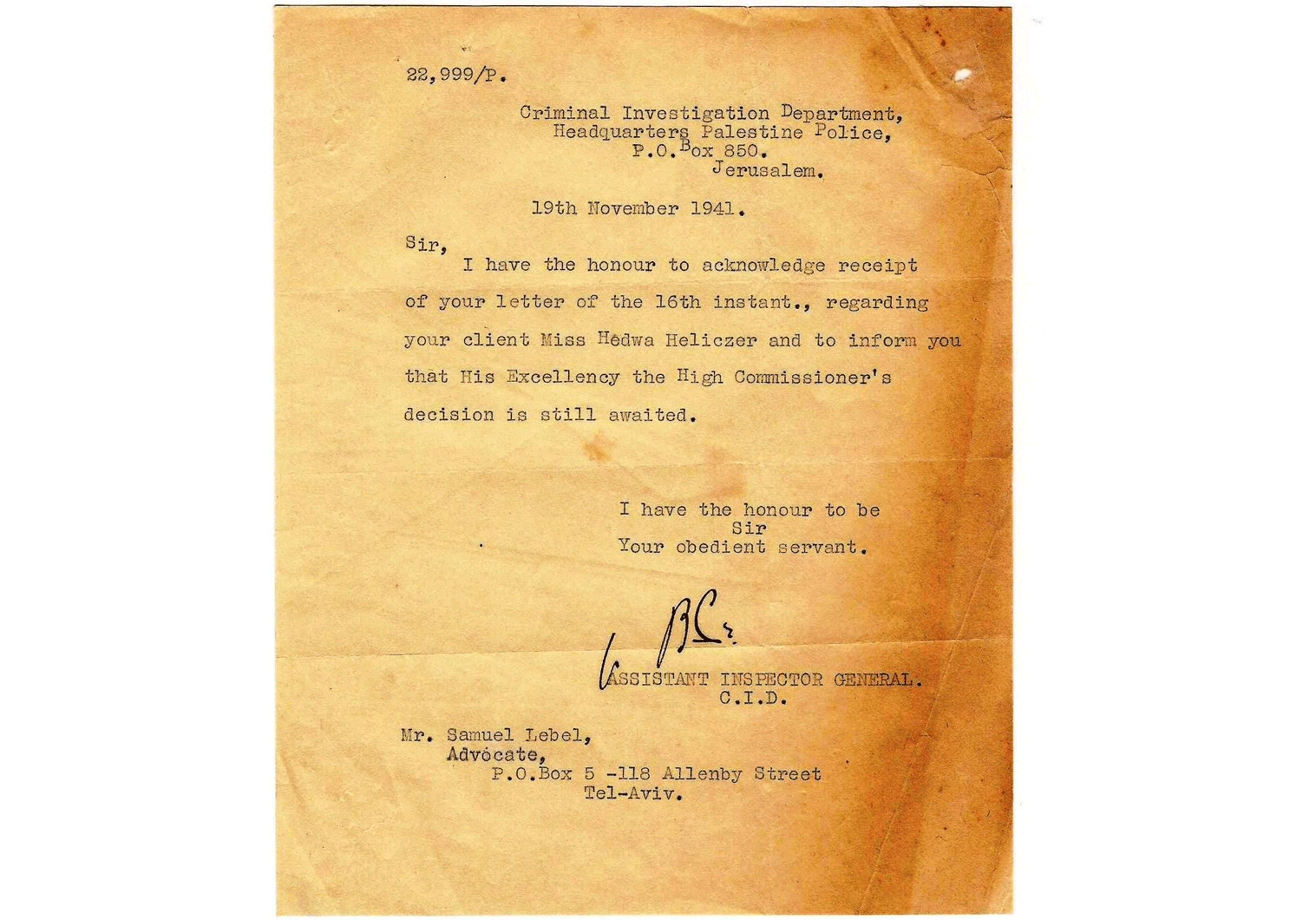British Mandate internment camps permit
WW2 civilian internment camp.
Even though the items in this article cannot be classified as travel documents, they are important and interesting enough to add images of them and explore the story behind them.
During the war, each side, be it allied or axis, established camps to house enemy civilians that were caught after the outbreak of war on their territory.
In previous conflicts as well, for example during World War One, there were some civilians that did not managed to escape in time and return back home safely. In such cases they were incarcerated and placed into civilian holding facilities.
Sometimes, through negotiations through a third party, like the International Red Cross or a neutral country such as Sweden or Switzerland, there was a possibility of a civilian exchange: British or Americans were exchanged for German or Japanese. But those who did not manage to escape or leave at the end via exchanges, were interned.
During the war hundreds of civilian camps were operating in Germany, France, Holland, Switzerland, Ireland, UK, US, Australia, South America and even in British Palestine: Some camp locations where at Atlit, Jaffa, Bethlehem, Haifa and Bat Yam.
Internment of Japanese Americans
Internment of German Americans
Internment of Italian Americans
List of concentration and internment camps
The article here will bring into light the story of one individual who was imprisoned in several civilian internment camps in the Mandate during the first years of the war.
Hedwa Heliczer was imprisoned in 1941, arrested by British security forces in Tel Aviv. From the camps she managed to send out letters to her lawyer, which contained some information on her activities before the war as well. According to one letter dating from September 8th 1941, being sent out from the women’s internment camp at Jaffa near Tel Aviv, she emigrated from Poland in 1934, and enrolled into university studies in Jerusalem. The letter mentions her interrogators at the C.I.D who were also the ones that censored and red all incoming and outgoing letters to and from the prisoners. The C.I.D (Criminal Investigation Department) also dealt with espionage inside the country. Their main HQ was at Jerusalem but it had several branches located in Lodd, Tel Aviv, Haifa, Jaffa and more. The C.I.D was also in charge of gathering all information on Jewish and Arab terrorists or resistance fighters, starting with the Arab revolts in the 1930’s and Jewish underground groups operating against the occupying British forces such as Etzel and Lechi. Hedwa was a supporter of the Communist cause and was caught in one of the evenings hanging Communist posters. During her arrest, the Soviet Union had not “switched” sides yet, was still seen as part of the Axis. It was during her imprisonment that Russia “joined” the Allies, something that helped her, at the end, in getting released.
The important image in this article is the “entry-permit” that was given to her lawyer, Samuel Lebel from Tel Aviv, to enter the camp when visiting his client. The permit had to be returned back immediately in order to be destroyed. As we can see at the end it was not the case, the lawyer kept it among his files together with other documents and letters that were sent to him.
I have added sample images of these World War Two related documents.
Smaller image source: Wikipedia.
Thank you for reading “Our Passports”.





Annemor Schønhaug
Thanks 🙂
Neil
Welcome 8)